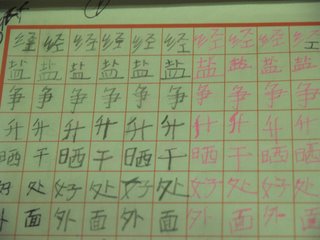
Chinese Characters Part 2: Why Written Modern Chinese is an Easy Language 閱讀: 中文還是英文容易?
And now to all of you who have put up breathlessly waiting for 2 days for the second part in this series, here it is and no I haven’t lost my mind in saying that Chinese is easy. After having studied Chinese for a long time, I recently fully realized that written Chinese was not a phonetic language是沒有字母的. “It took you years to figure that one out,” you say? Well, it took me years to figure out the implications of it. Most people of us with alphabets tend to think of languages with pictures in them as a crude throwback to the days of hieroglyphs. Not so.
First, as many of you may know, Chinese characters can be read using any pronunciation. So, the character for 林 can be read as ‘lin’ in Mandarin or ‘lam’ in Cantonese and ‘hayashi’ in Japanese. I’m sure there is also a pronunciation in Korean, but I don’t know it. The characters can be read in any one feels like since they are not an alphabet, so that they can be understood in different languages. I made my way through the Japanese rail system this summer using my rudimentary Japanese and an ability to read their Chinese characters, 漢字 you’ll remember that from my last post, called ‘kanji’ in Japanese.
Another reason Chinese is easy, once we get past the initial time investment, is that they use meaning compounds to make new words, specialized terms 專門術語 and the like. Unlike Japanese, which borrows sounds wholesale from foreign languages, ‘terebi,’ ‘ cupu,’ and the like, Chinese uses the character meanings to form words. So, that computer becomes ‘electronic brain’電腦, and television becomes ‘electronic vision’電視. That means that learning new words is much easier than with an alphabet-based language.
(This is my daughter's practice notebook as she is hard at work, once in a while, doing her homework.)

0 Comments:
Post a Comment
<< Home